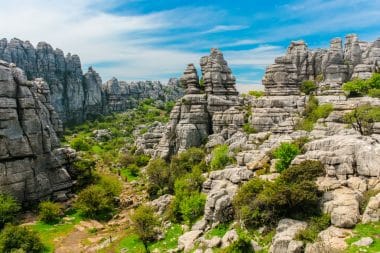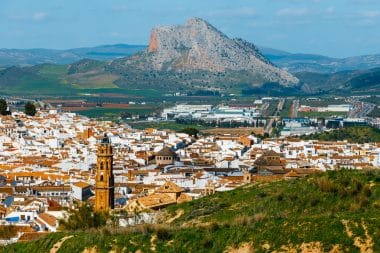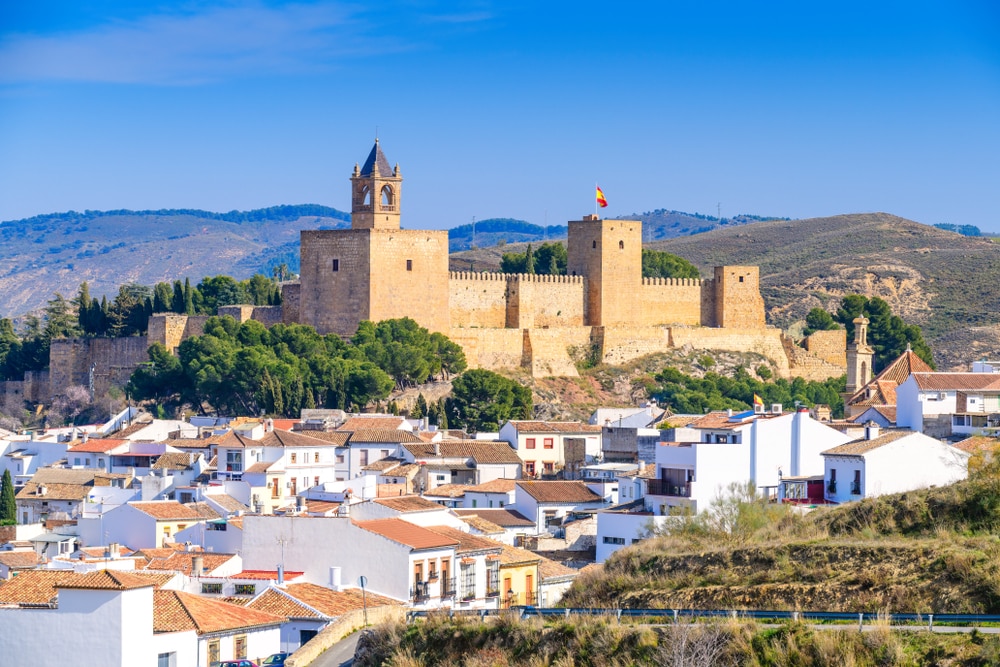The Andalusian city of Antequera is far less well-known than the nearby provincial capital of Malaga. However, for lovers of smaller towns who are interested in culture and also love excursions into the rich nature of southern Spain, Antequera is a real gem and worth more than a small detour. With just under 41,500 inhabitants, the city is manageable and all inner-city sights are within easy walking distance.
There are numerous magnificently designed churches and monasteries, archaeological excavation sites that take visitors back in time, and the Alcazaba of Antequera, a massive Moorish fortress. Directly adjacent to the city limits are several hiking and nature reserves, where you can relax wonderfully in the midst of nature that is as enchanted as it is striking. The El Torcal Nature Reserve is the most famous of them. In between all this, however, the Andalusian relaxed way of life is not neglected. In the old town of Antequera, one quaint tapas bar follows the next.
The Alcazaba of Antequera
When it comes to medieval fortresses in Spain , the Alcazaba of Antequera is one of the absolute highlights. The fortress towers very loftily above the historic old town of the village. The best way for visitors to reach it is on foot after a short walk through the winding streets of Antequera. From the Alcazaba, there is a wonderful view over the city and the surrounding mountain landscape. The fortress dates back to the 14th century and has the typical construction of Moorish fortresses in the region of Andalusia . Its appearance has been almost completely preserved since its construction. Only a defensive tower was added to the ensemble in 1582. You can visit it on a tour next to a massive bell tower and the picturesque old gardens of the Arab fortified castle. Pine and olive trees stand all around and exude their pleasant scent. The view of the Alcazaba from Antequera is particularly charming after dark, when it is fantastically illuminated.
The most beautiful places of worship in Antequera

The oldest church in the city is the Iglesia San Francisco. It was built in the 15th century in the late Gothic style. From here, you can take a walk to the more than ten churches and convents of Antequera that are worth seeing. They are all located in the city centre, which is referred to as the historic old town. The next stop is the Convent of San José, which is located right next to the City Hall. The Carmelite monastery of San José, founded in 1632, has a richly decorated baroque façade with its adjoining church. The portal of the church house was designed in Castilian style. The interior decoration with sumptuously designed altarpieces is also well worth seeing.
Located near the Alcazaba, the Real Colegiata de Santa María la Mayor is considered the most important church in the Andalusian city. The stone church body looks very massive and, due to the somewhat elevated altitude, allows a beautiful panoramic view over the old town. The interior is simple, but the façade of the Real Colegiata de Santa María la Mayor is more than worth seeing. The neighbouring café invites you to take a breather in its outdoor area. From here you can take in the impressive façade of the Renaissance church. We then continue towards the city center to the Iglesia de San Sebastián. In addition to the bell tower of the church, which can be seen from afar, the filigree choir stalls in the interior are particularly impressive.
Back to the Neolithic Age: The dolmens of Antequera
Just a few metres from the outskirts of the city, the dolmens of Antequera, dating back to the Neolithic and Bronze Ages, beckon. Since 2016, the stone natural monuments that used to serve as burial sites have been a UNESCO World Heritage Site. The dolmens are the most important historical attraction of the city. The three dolmens are made up of solid blocks of natural stone that were joined together by human hands more than 6,000 years ago to form the tombs of Dolmen de Menga, Dolmen de Viera and Tholes de El Romeral. Numerous deceased people were buried in each of these dolmens. If one considers that some of the stone blocks belonging to the dolmens weigh up to 180 tons, it becomes apparent what a highly valued achievement the builders of the Stone Age tombs achieved with their pure muscle power when they positioned the blocks. The tombs have the appearance of accessible caves, each equipped with several burial chambers. All dolmens are in good condition and can be walked on safely.
A trip to the El Torcal Nature Reserve

The El Torcal Nature Reserve is known as a popular hiking area not only in Andalusia, but throughout Spain. The popularity of the landscape park is mainly due to the picturesque karst formations that can be seen there. Karst columns rise like stalactites from the green of the landscape. In addition, there are massive rock slabs to see and climb. The stone surface of the rocks is largely smoothed in some places. Other rocks have a rough and rugged surface, interspersed with crevices and caves. Getting there from Antequera is quick and easy, both by car and by bus or taxi. El Torcal is only about 15 kilometers from the city.
In the El Torcal Nature Reserve there are three well-marked hiking trails of different lengths. These are suitable for everyday hikers and also for families. The route of the Ammoniter is a little more challenging and therefore only accessible as part of a guided hiking tour. Visitors who are good on their feet and are not afraid of a little climbing adventure are compensated with very special natural highlights. Along the way, hikers encounter numerous native reptiles on all routes, which feel extremely comfortable between the rock formations of El Torcal. In addition, with a little luck, vultures, eagle owls, foxes and ibexes can be examined.
The plants of the nature reserve are also impressive. There are ancient holm oaks and Portuguese oaks, mulberry and olive trees, a wide variety of orchids and peonies. In spring, when the many flowers native to El Torcal bloom, a visit is particularly appealing. If you want to experience Andalusia in its most original form after your hike, make a detour to the village of Villanueva de la Concepción, which has a population of 3,000. It is located in the middle of the El Torcal Nature Reserve. The box-like houses of the village are all pristine white. Also worth a visit is the 19th-century parish church of Nuestra Señora de la Inmaculada Concepción. In the interior of the church there are some very high-quality wood carvings


